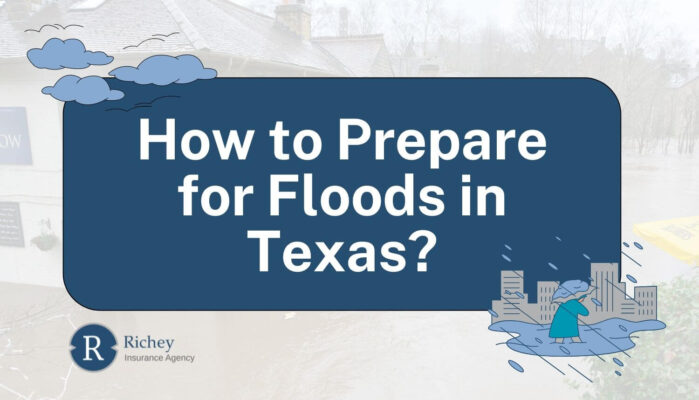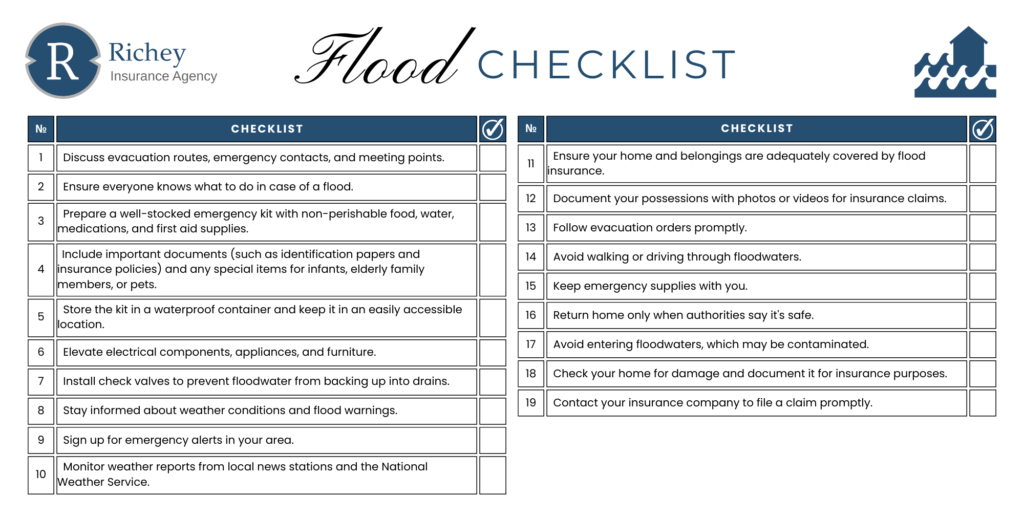
In May 2024, Kingwood, Texas, experienced significant flooding, serving as a reminder of the importance of flood preparedness. While the worst may be over, it’s crucial to be ready for future events.
We craft this guide to provide you with practical steps to prepare for floods in Texas.
Begin by discussing evacuation routes, which are the safest paths to leave your home or workplace.
Identify local emergency contacts, such as fire, police, and medical services, along with a designated meeting point for your family or household. You need to make sure everyone understands these plans and practices them regularly.
We recommend having a checklist to make sure you have covered all the necessary steps.
Here’s a checklist:

Prepare a well-stocked emergency kit that includes essential items to sustain you and your family for at least three days.
Include non-perishable food items, such as canned goods and energy bars, along with an ample supply of water.
Do not forget to add medications, a first aid kit, important documents (such as identification papers and insurance policies), and any special items for infants, elderly family members, or pets.
Store these items in a waterproof container and keep them in an easily accessible location.
Take proactive measures to protect your home from flooding:
Stay informed about the weather conditions and flood warnings in your area. Monitor weather reports from local news stations and the National Weather Service.
We recommend signing up for emergency alerts through your local government’s notification system. Keep your mobile phone or a battery-powered radio on hand to receive updates in case of power outages.
You need to make sure your home and belongings are adequately covered by flood insurance.
Standard homeowners’ insurance policies typically do not cover flood damage, so it’s important to purchase a separate flood insurance policy.
Learn more about homeowners insurance in Texas.
Do not forget to document your possessions with photos or videos and store this inventory in a safe place or online. This documentation will be invaluable when filing an insurance claim.
If you don’t have flood insurance yet, consider getting a Texas flood quote from Richey Insurance to protect your property.
By following these comprehensive steps, you can better prepare yourself and your family for the risks associated with flooding in Texas.
FEMA Flood Map Service Center: Use this resource to assess your flood risk and understand flood hazard areas in your community. FEMA’s Flood Map Service Center provides access to flood maps, risk assessments, and information about the National Flood Insurance Program (NFIP).
Evacuation and Contraflow Routes: Familiarize yourself with evacuation routes and procedures in your area. Knowing the designated evacuation routes and contraflow plans can help you evacuate safely during a flood or other emergency.
Texas Division of Emergency Management: Contact your local emergency management office for information about flood preparedness, evacuation procedures, and emergency shelters. They can provide you with local resources and guidance specific to your area.
National Weather Service (NWS): Stay informed about weather conditions and flood warnings by monitoring the National Weather Service’s forecasts and alerts.
Texas Department of Transportation (TxDOT): Check the Texas Department of Transportation’s website for information about road closures, traffic conditions, and evacuation routes. TxDOT also provides updates on road conditions during emergencies.
American Red Cross: The American Red Cross offers resources and assistance during and after disasters. Visit their website for information on emergency preparedness, shelter locations, and recovery services.
TexasReady.gov: The website offers tips, checklists, and resources for emergency preparedness.
Texas Flood Information Viewer: The Texas Flood Information Viewer is an interactive mapping tool that provides access to floodplain maps, rainfall data, and flood risk information for Texas communities. Use this tool to better understand flood risks in your area.
Texas Department of Insurance (TDI): The Texas Department of Insurance offers valuable information and resources related to insurance coverage, including flood insurance. Visit their website for guidance on purchasing flood insurance, understanding policy coverage, and filing insurance claims after a flood.